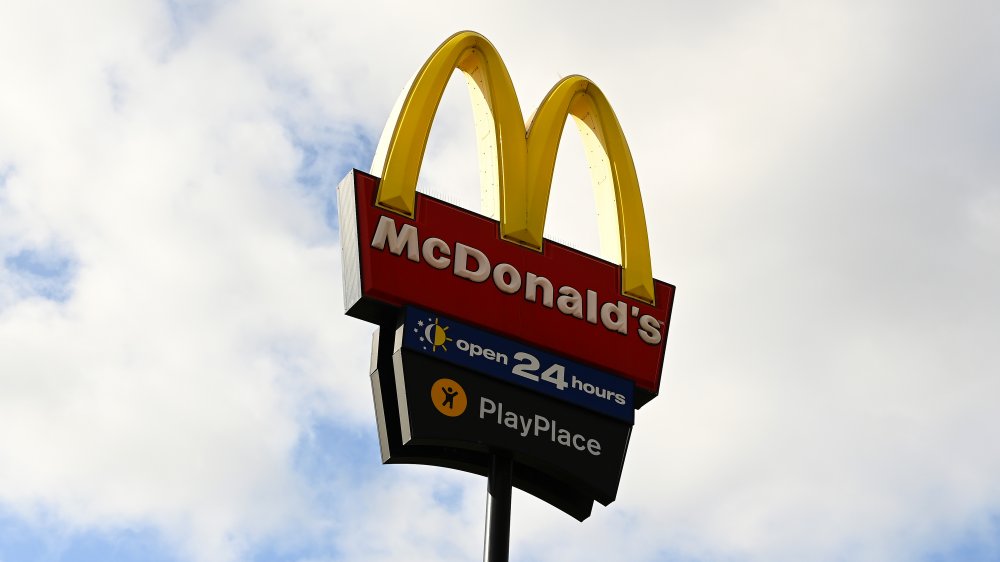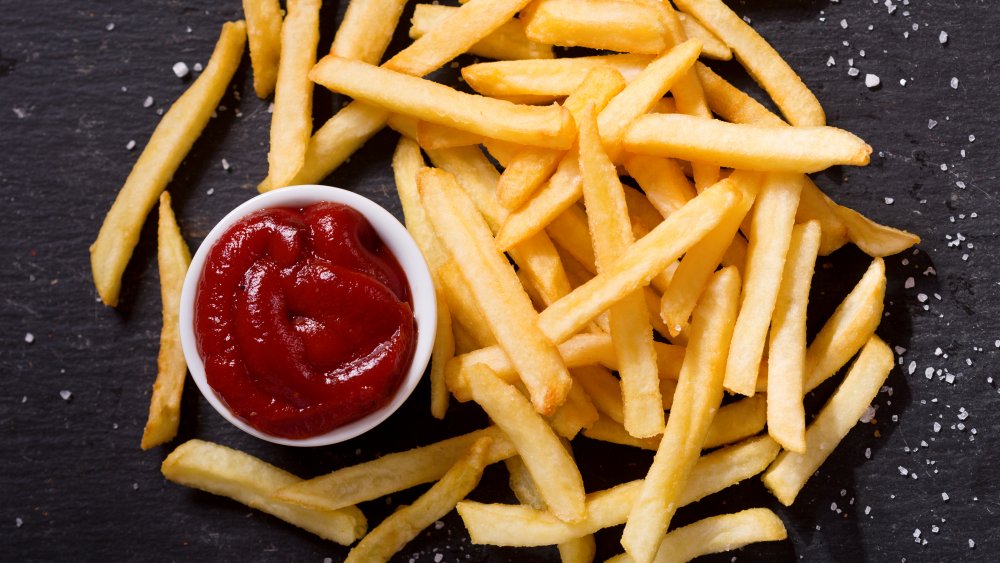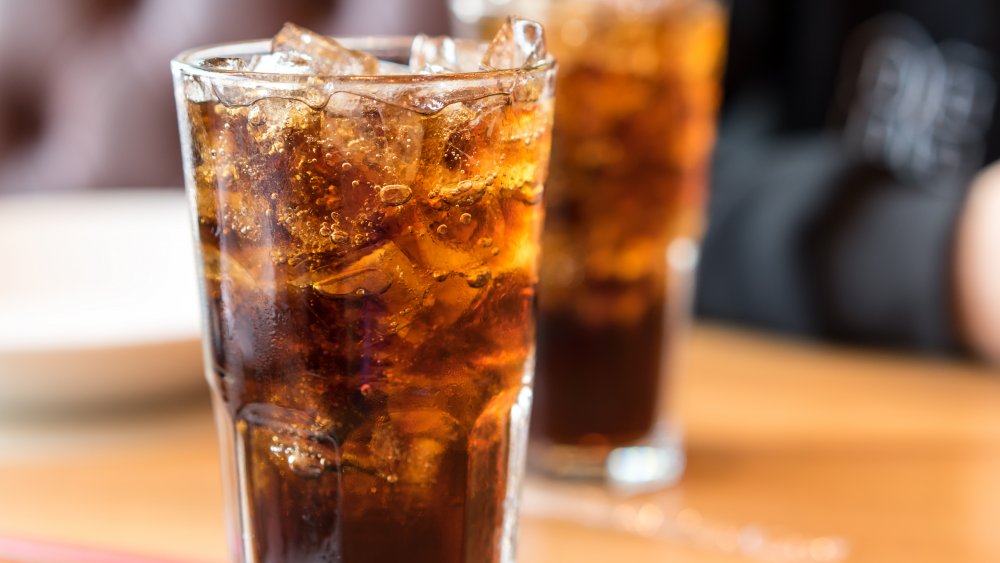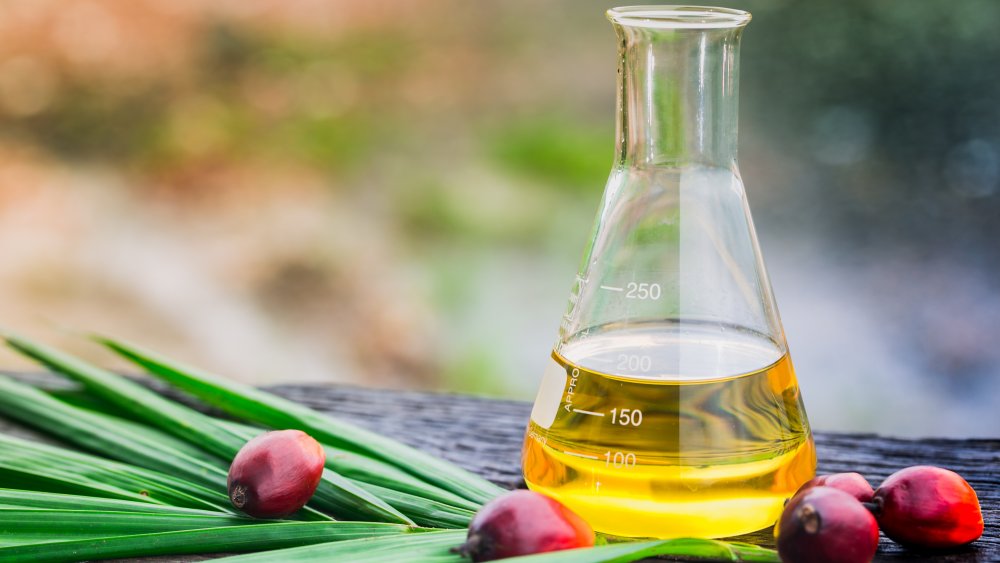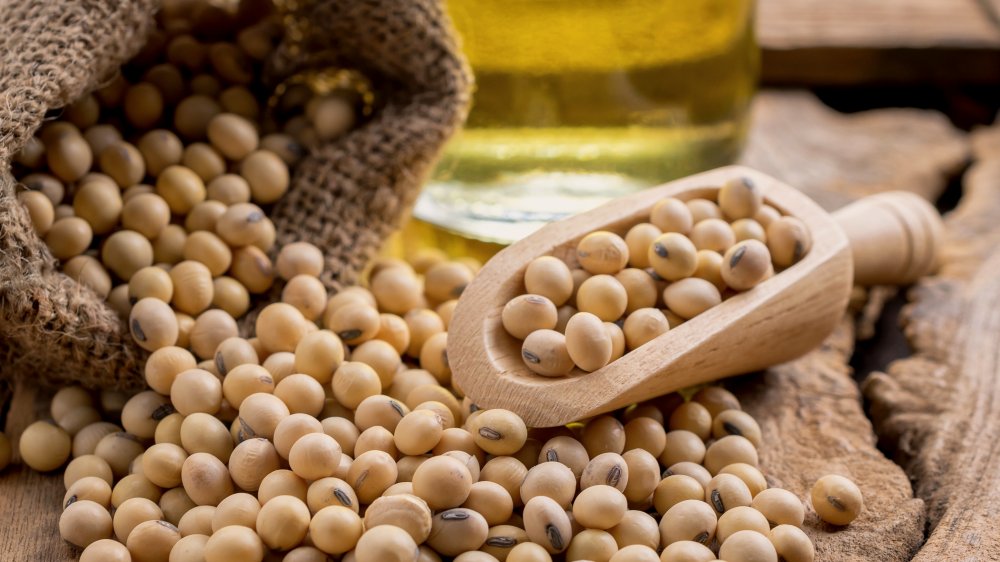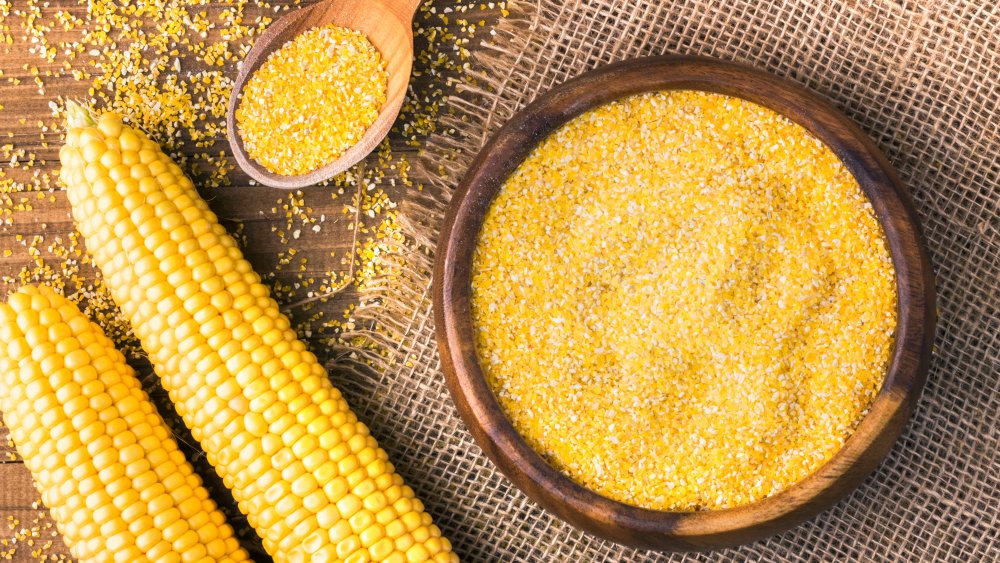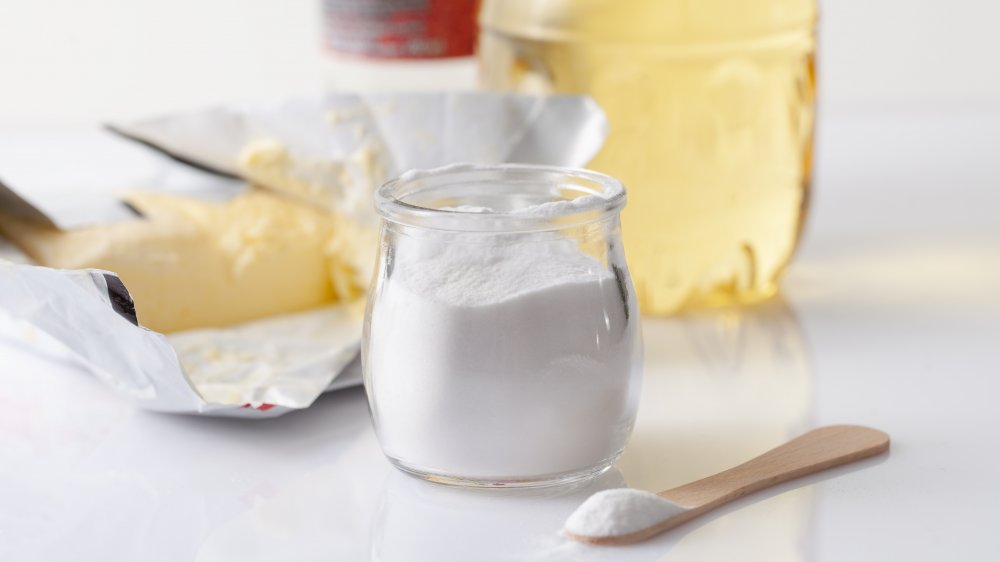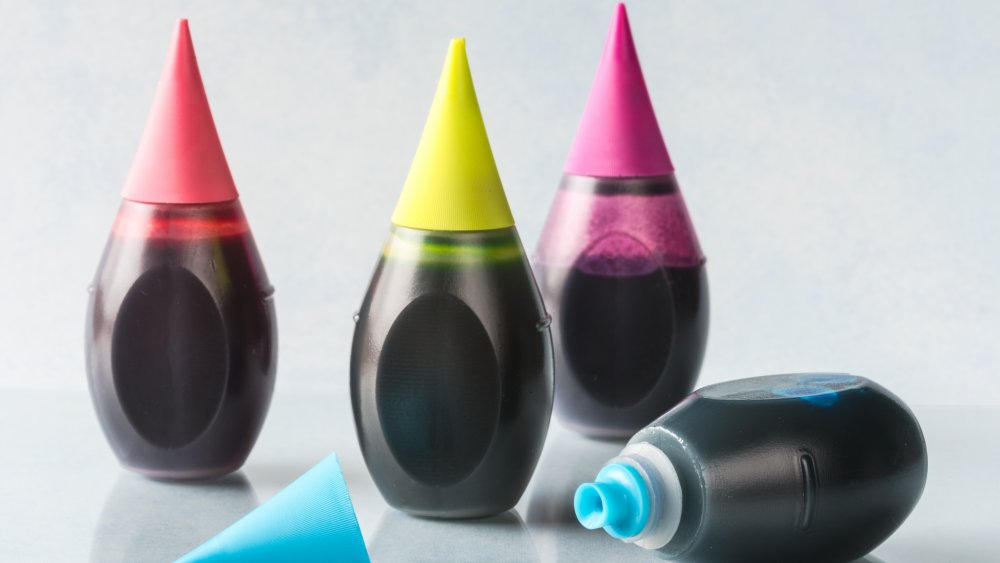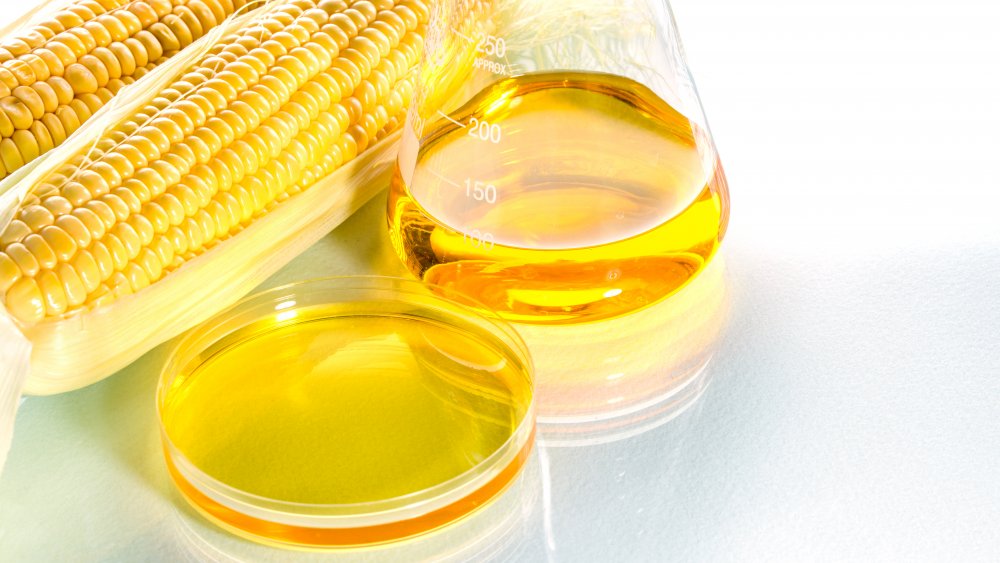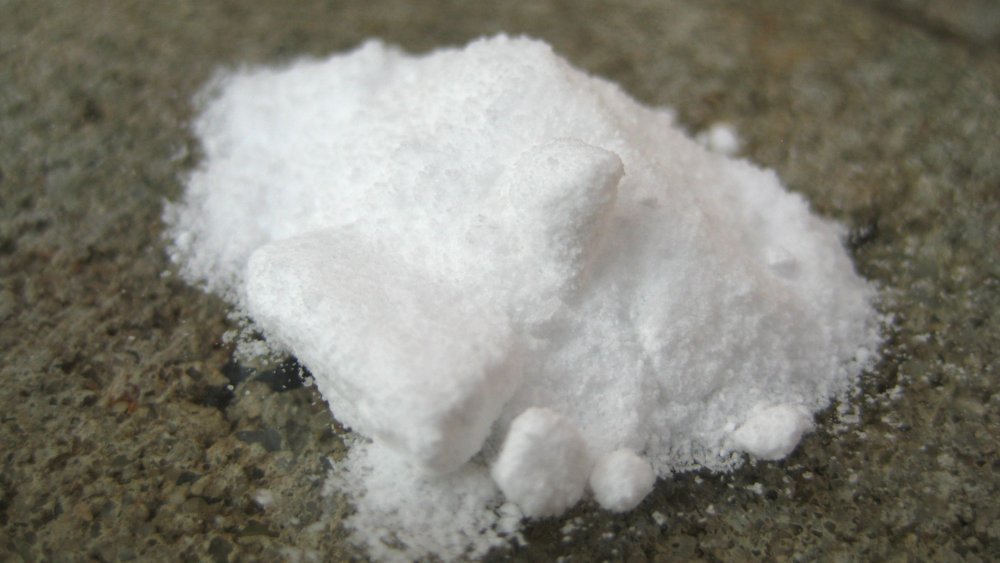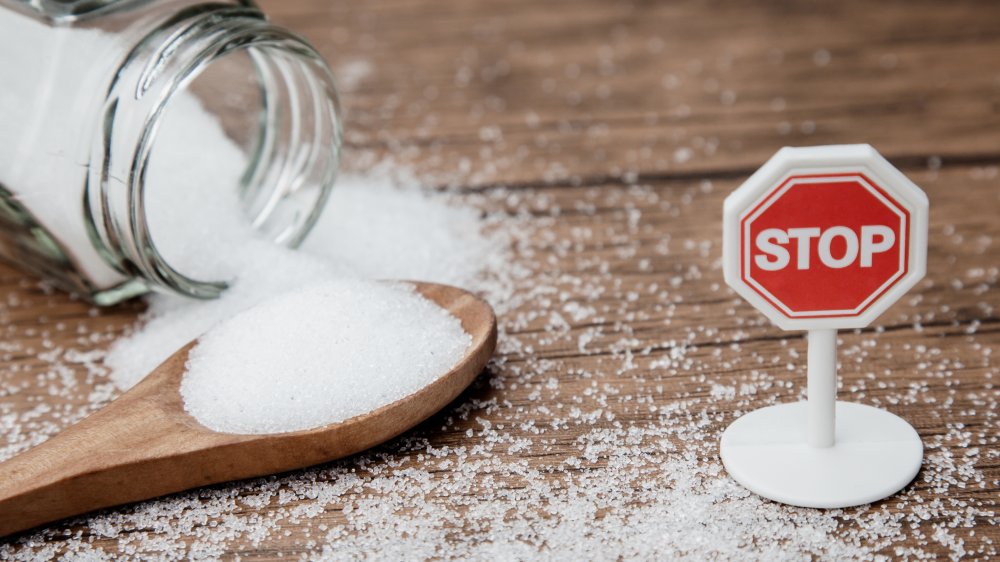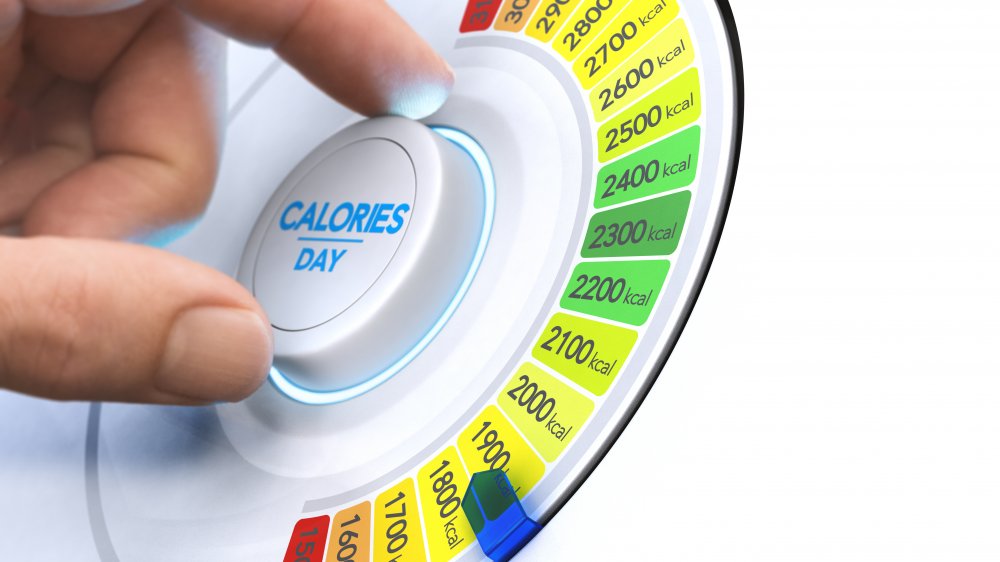Ingredients You'd Be Surprised Are In The McDonald's Food You're Eating
We all know that fast-food isn't exactly ideal when it comes to eating healthy, yet we are so invested deeply in its convenience and almost addictive delectability. And let's face it: our lives can be pretty hectic, making places like McDonald's not only a life-easing convenience, but one of the most popular brands in the entire world. We've all been on long road trips needing quick sustenance; we've all run late heading into the office. These occasions make McDonald's an ideal stop. It's quick, it's convenient, and there's a drive-thru. For some others, it just comes down to taste. What's behind the Golden Arches is irresistible, again with a price point and flavor that can't be beat.
But do we really know what we're eating when we're rushing to grab that quick lunch, or when we have a hankering for those salty golden fries? It's not all as simple as some Idaho russets and scalding hot oil. These are the ingredients you'd be surprised are in the McDonald's food you're eating.
Sodium acid pyrophosphate
Those McDonald's french fries we all love contain sodium acid pyrophosphate (or SAPP). What's that? Well, phosphates are used in a lot of baked goods, cheeses, and even breakfast cereals. Used to add volume and air, it's the reason those fries have that beautiful, light color. While not entirely questionable on it's own, this phosphate can lead to issues for those with low bone density or osteoporosis. According to the Center for Science in the Public Interest, most of us already consume too many phosphates, causing further problems with our bones, kidneys, and cardiovascular health. LiveStrong says it causes bones to become brittle, meaning you need to take in more calcium to counteract the SAAP.
It's not all bad, though. Sodium acid pyrophosphate not only maintains the golden color in the fries, but it also helps to reduce carcinogens such as acrylamide.
Will eating fries once in a blue moon cause your bones to rapidly deteriorate? No, not likely. But it's probably best not to make McDonald's french fries a part of your regular diet.
Caramel color
If you drink soda (or some rums and whiskeys), you likely already consume caramel color. Not to be confused with candy-like caramel, this type is used to give beverages, sauces, and other condiments that golden, amber, or brown hue. A pretty common food additive found even in your McDonald's Big Mac, there are questions and limits on how, where, and how much is used, which can vary from place to place.
Caramel color contains a chemical called 4-methylimidazole (4-Mel), which is listed as a cancer-causing toxin in certain amounts. This prompted states like California to label foods with more than 29 micrograms of caramel color as potentially harmful under Proposition 65 in the interest of public health.
Most soft-drink manufacturers have made efforts to reduce caramel color levels below the allotted 29 micrograms, but unfortunately, if you drink more than one soda or eat other foods containing caramel color, you may be boosting your daily intake way past the cut-off point.
Palm oil
Due to its high smoke point (450 degrees Fahrenheit), palm oil is the perfect choice for frying up sandwiches like the Buttermilk Crispy Chicken Sandwich from McDonald's. While we're usually encouraged to eat plant-based oils and fats, there are some discrepancies with regard to palm oil's nutritional quality, so it is often questioned. Found in the fruit of the oil palm tree, it doesn't contain any trans fats and is high in vitamin E. Tocotrienol, the type of vitamin E found in palm oil has been linked to improved brain function in mice.
But, some experts aren't sold on palm oil's health benefits because all its calories come from fat, with half being saturated fat. Saturated fat has long been considered one of the "bad" fats, leading to heart disease and type 2 diabetes.
Though you'd be hard pressed to even walk down a grocery aisle and find something that doesn't contain palm oil, the environmental negatives are more pronounced — from deforestation to loss of land for indigenous peoples, particularly in Southeast Asia, there's a large push to stop the use of palm oil, or least increase sustainable production practices.
Hydrogenated soybean oil
The hydrogenated soybean oil found in your McDonald's Chicken McNuggets is not as innocent as you might think. Produced by adding hydrogen to the oils, the problem with trans fats is that they raise your LDL or low-density cholesterol (the bad kind), while lowering your HDL or high-density lipoprotein (the "good" cholesterol). They are a go-to for fast food restaurants because the oils can easily be reused multiple times in commercial fryers. Fully hydrogenated oils tend to be slightly healthier than partially hydrogenated oils, but risks including obesity, cancer, and heart disease are still there.
It's not just the fact that the oil is bad, though. Soybeans themselves are now subject to health review. Often, U.S.-grown soy is often genetically engineered and even contains a compound that mimics estrogen, potentially causing hormone issues in women. Studies have shown women who consume too much soy in their diets have a higher rate of developing breast cancer.
Carrageenan
Carrageenan is another example of a long employed food additive. Used for thickening, this seaweed derivative is usually found in desserts like ice cream, and thus in McDonald's menu items such as the chocolate shake — and anything else that contains McDonald's ice cream. For years, many believed there was no issue with carrageenan, or Irish Moss, because it's a naturally occurring substance. Despite its earthy-background, there's been a push to label this ingredient as potentially harmful due to a connection with gastrointestinal issues.
A 2016 study from the Cornucopia Institute found that carrageenan can cause problems like bloating, irritable bowel syndrome, and ulcerative colitis, as well as cancer and diabetes. However, most of these claims have been attributed to self-reporting rather than traditional research, which is why carrageenan is still a widely used ingredient. This inconsistency has prompted calls for more human testing to determine the safety of this ingredient. Anyone with pre-existing digestive problems may want to steer clear, though, until studies are more definitive.
Maltodextrin
Another common ingredient used as a food thickener, maltodextrin isn't necessarily something dangerous for the human body. Thankfully, on its own, maltodextrin has very few direct links to any sort of health problems. However, most of the food products containing this ingredient that leave much to be desired with regard to nutritional content. That's because maltodextrin is a corn-derived polysaccharide. Polysaccharides are long chains of monosaccharides, or simple sugars, which result in carbohydrates.
Typically, these same foods are highly processed with high amounts of carbohydrates and sugars. People with Type 2 diabetes should be wary of maltodextrin and try to steer clear. In addition to a rise in blood sugar levels, anyone looking to lose weight should also avoid it. It's those same sugars and carbs that will keep adding on the pounds, so menu items like a McDonald's Egg McMuffin (which carries maltodextrin in its Canadian bacon) should be a one-off, occasional treat or emergency breakfast.
Mono- and diglycerides
Mono- and diglycerides have been creeping up more and more on all sorts of ingredient labels as of late, likely because we're inundated with processed and pre-packaged foods. This is because mono- and diglycerides are used for stabilizing food, thus making them last longer on store shelves. Yet another culprit of trans fats in our diets, mono and diglycerides, which are found in quite a few menu items including the McDonald's Filet-O-Fish Sandwich. These don't fall into the same labeling category as other trans fats because they are emulsifiers and not lipids.
While considered safe with little to no harmful side effects, foods containing mono- and diglycerides tend to be loaded with refined sugars. And though the amount of trans fats can be extremely small, there's no way to measure how much of them there are exactly; meaning that extra stop at the drive-thru can push you over a recommended daily limit.
Artificial colors
Artificial colors have been subject to a lot of debate for many years. Found in almost every snack and candy in the grocery store, McDonald's is no different. One place you'll find lots of artificial colors is the McFlurry with M&Ms. Some people argue they are not only toxic, but also contribute to or exacerbate issues such as ADHD. In fact, tartrazine, or yellow #5 (yellow #1 through yellow #4 have been made illegal), is under review for potential links to migraines and hyperactivity. The FDA hasn't outright said they are without issue, but doesn't believe a ban is in order until further testing is done.
Currently, there are only nine artificial colors in use in the U.S., but recent animal testing studies have linked some with organ damage and cancer. With no purpose other than the aesthetic, the European Union banned all artificial coloring in 2008, including those used in popular McDonald's menu items.
High fructose corn syrup
Right behind artificial colors in the health debate is high fructose corn syrup. Hotly contested for years, this additive acts like a sugar, sweetening foods on the cheap. Another commonly found ingredient, most of us are used to finding this on cereal boxes, candy wrappers, and highly sweetened beverages. Rather surprisingly, it's also in McDonald's staples like the Big Mac (and anything served with ketchup, really).
Produced from corn syrup, experts agree there are a variety of reasons why this ingredient is bad for you. The main reason is that it adds an excessive amount of fructose to your diet, resulting in subsequent health issues. Too much fructose leads to liver disease, obesity, and diabetes, to name a few. Despite strong arguments against it, banning it from foods has proven extremely difficult due to its easy, inexpensive production. With no known active nutrients, high fructose corn syrup is just cheap, empty, and unnecessary calories.
Sodium metabisulfite
So, this is a complicated (and, frankly, a little scary) name for a relatively simple ingredient. Sodium metabisulfite is the combination of sulfuric acid and regular old table salt. A preservative in food like McDonald's Sausage Burrito, it's really a jack-of-all trades with regard to its uses. Though there are differences between standard and food grade metabisulfite, the basic chemical is used in a range of industries, from cleaning agents, fungicides, and even as a successful treatment to remove pesky tree stumps. Because of a high rate of allergic reactions, the FDA took measures to remove it from fresh foods. However, its use in processed and prepared foods (like the tortilla your favorite breakfast burrito is wrapped in) is still accepted.
Side effects like diarrhea, hives, and low blood pressure often occur, with asthmatics being particularly predisposed. Three to ten percent of people having asthma also have a sodium metabisulfite sensitivity. Along with an increased risk of reproductive damage, sodium metabisulfite also is responsible for many skin issues like dermatitis.
Dextrose
Another ingredient similar to high fructose corn syrup, dextrose is also simple sugar created from corn. Though not as sweet as regular sugar or corn syrup, dextrose has been known to cause large spikes in blood sugar. The effects are so high and so fast-acting, doctors often use it to treat patients with hypoglycemia. Because of this fast-acting potency, it can cause diabetes, insulin resistance, and heart disease when consumed regularly in food and dietary forms.
Too much sugar can also cause depression and cosmetic issues such as skin problems like acne. Men should consume no more than nine teaspoons of added sugar per day, while women should limit themselves to six, so it's advised to be mindful of what you eat considering dextrose is found in the most seemingly unlikely of places. You wouldn't necessarily expect extra sugar intake from a McDonald's Quarter Pounder with Cheese, but depending on what you've eaten in a day, you might want to rethink that burger after all.
Calories
Ok, this one might be a little bit of a stretch considering calories aren't exactly ingredients. The high calorie count found in most McDonald's menu items is higher than what we should be taking in per meal, though, and perhaps even setting us close to our daily limit — especially if you're trying to lose weight or diet. For someone adhering to the recommended 2,000 calorie-per-day diet, a Big Mac comes in at 550 calories, or 27.5 percent of your daily intake. If you're looking to turn your stop into a meal, the Big Mac Combo Meal clocks in at 1090 calories. That's 54.5 percent of your daily caloric intake, leaving very little room in which to squeeze two other solid, well-rounded meals.
So, should you never go there? Should you swear off McDonald's forever? Well, no. Let's face it: we all get cravings and sometimes we just need to grab something fast (and delicious). But even the healthiest of people should put a limit on their number of McDonald's runs. And next time maybe consider ordering a salad... or a grilled chicken sandwich.
